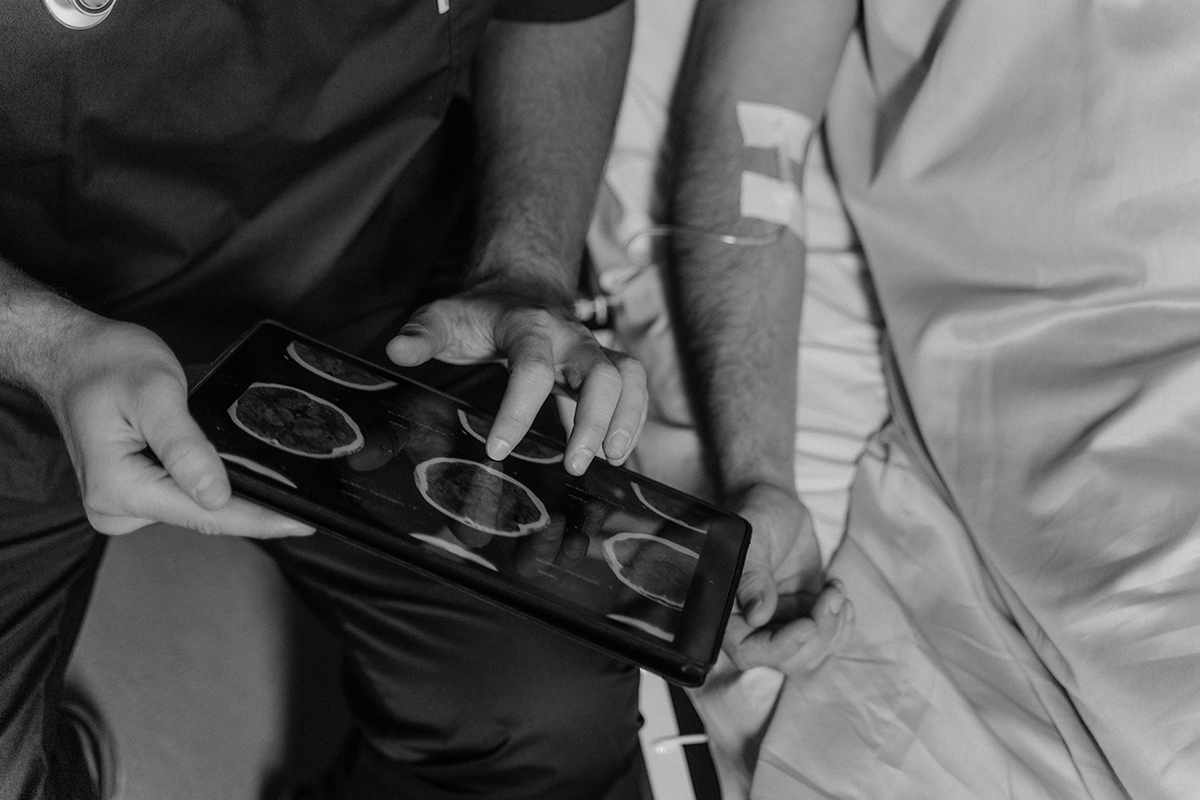Strokes 101: Learn more about the common neurological illness

Did you know that every 40 seconds, a person in the United States experiences a stroke? This neurological illness and sudden injury to the brain are also the leading causes of disability in our country. Dr. Chethan Rao, associate professor in the Department of Neurology at Baylor College Medicine, details the different types of strokes, recovery, treatment options and more.
What happens during a stroke?
To understand what happens during a stroke, you must know the different types: ischemic strokes, which are 85 percent of all strokes, and hemorrhagic strokes.
“During an ischemic stroke, there is some blockage of blood flow to the brain,” said Rao. “In a hemorrhagic stroke, there is bleeding either into the brain or through an aneurysm. An aneurysm bleed is when a small bubble on a blood vessel ruptures due to changes in blood flow or high blood pressure, releasing blood on the surface of the brain.”
Mini strokes are transient ischemic attacks. “These are stroke symptoms that last for a very short period,” he said.
No matter the kind of stroke, they all should be taken seriously.
Causes of a stroke
For ischemic strokes, the leading causes and risk factors to be aware of are high blood pressure, high cholesterol, diabetes, smoking and heart disease.
“Strokes can be hereditary, but the majority are acquired. It is a person’s lifestyle that determines whether they are at risk of a stroke,” Rao explained.
He shares that the most modifiable lifestyle risk is smoking, which gives a person about four times the risk of developing a stroke. If a person’s blood pressure is not under control, they are about two to three times the risk.
“Diabetes is roughly the same – about two times the risk. High cholesterol is one and a half to two times the risk for a stroke. Controlling your primary risk factors helps prevent the chances of getting a stroke,” he said.
There is also an age-determined risk.
“The older you get, the higher risk you have of developing a stroke because you tend to collect risk factors over a period of time, and you can develop more diseases as you progress in age. These two, in combination, increase the risk of a stroke in the elderly.”
Symptoms
How stroke symptoms present in patients depends on the area of the brain involved. For this reason, it’s important to remember the common symptom acronym, BE FAST.
- B – loss of balance; staggering or leaning to the side while walking.
- E – eyes: potential loss or blurred vision in one or both eyes.
- F – facial weakness: one side of the face may look droopy or crooked.
- A – arm and leg weakness or changes in the strength of your arm or legs.
- S – speech difficulty in producing or understanding speech.
- T – time; make a note of when stroke symptoms started or when the last time you were known to feel “normal.”
If you experience these symptoms, call 9-1-1 immediately.
“The clock is ticking. For every minute lost not treating a patient, they lose about 2 million brain cells. It’s essential to get emergency medical care, recognize the type of stroke occurring, and treat it as early as possible,” Rao said.
Treatment and recovery options
After a stroke, a person can have trouble speaking and understanding, which means they will need to recover through speech or respiratory therapy. They can also have difficulty moving their arms and legs and will require physical therapy.
“We take for granted so many things when we have all of our capacities, like reaching for a glass of water or the ability to drink it,” said Rao. “With adequate therapy, there is recovery. It’s important that recovery starts early and is consistent.”
Strokes are treatable, especially ischemic strokes. The medication tPA, or tissue plasminogen activator, has helped improve stroke patients’ outcomes.
“One in eight patients who get this medication will recover to the point where they can function independently after about three months. However, the window of treatment is important,” Rao said.
Another treatment option Rao shares is a new, groundbreaking therapy in which a catheter is placed in the groin and snakes up to the brain to pull a blood clot out manually. This treatment can only be extended for up to 24 hours in certain populations. However, a patient will need advanced imaging capabilities like a brain CAT scan to determine if this treatment is feasible.
Learn more about Baylor Medicine Neurology.
By Taylor Barnes


